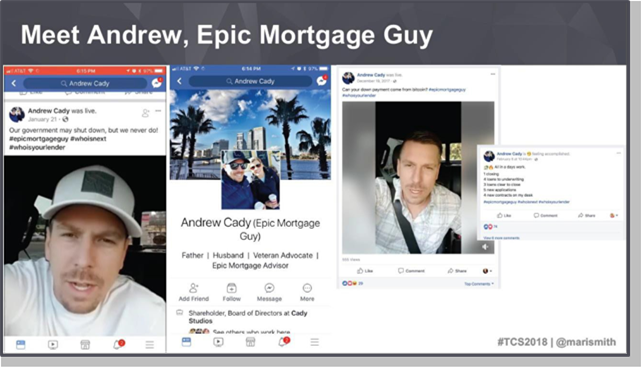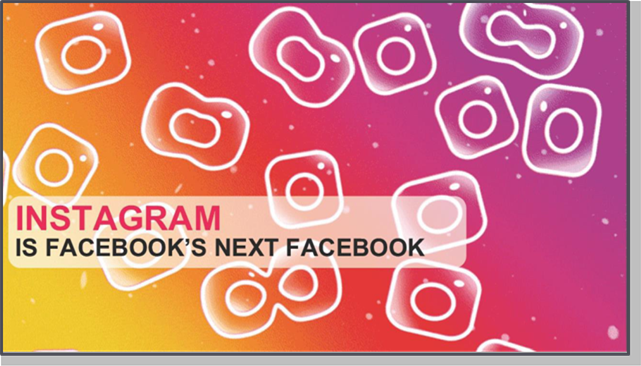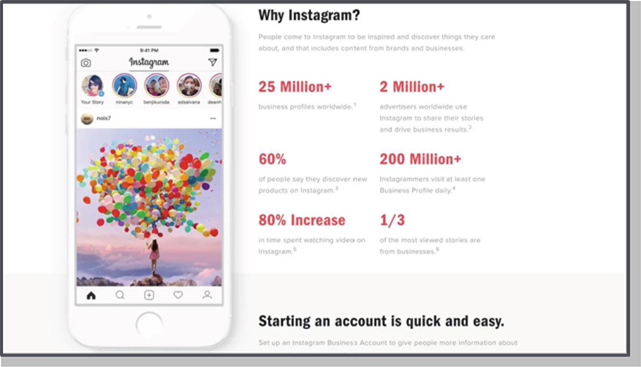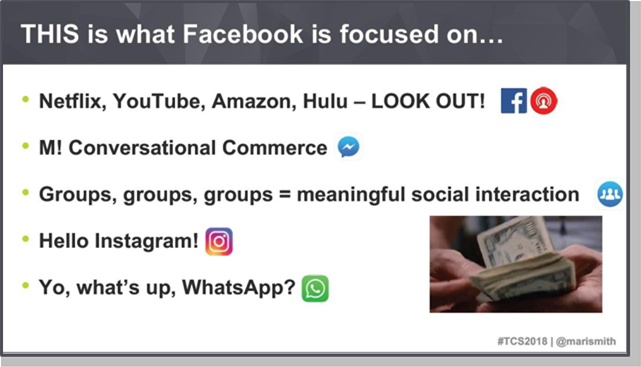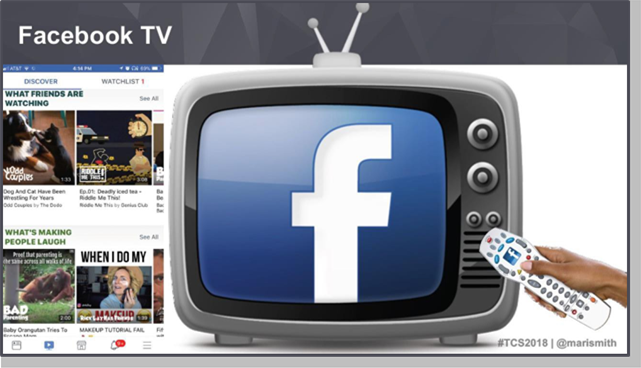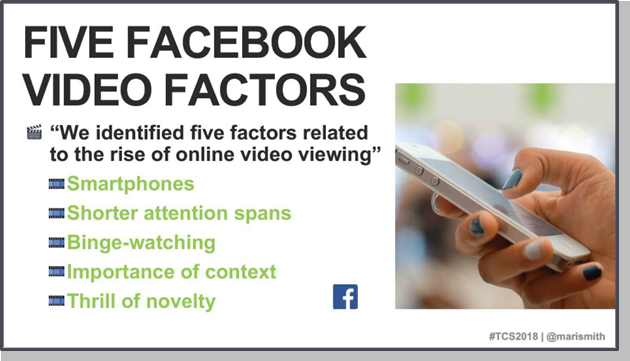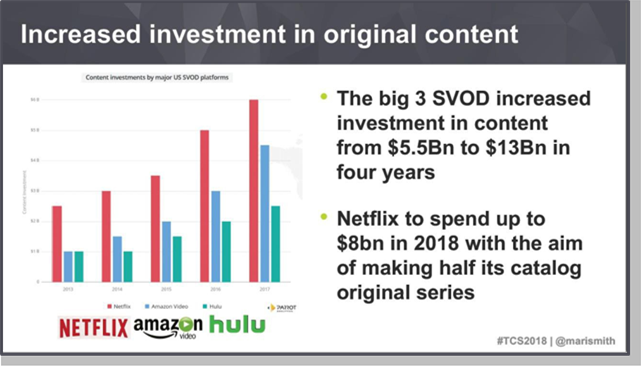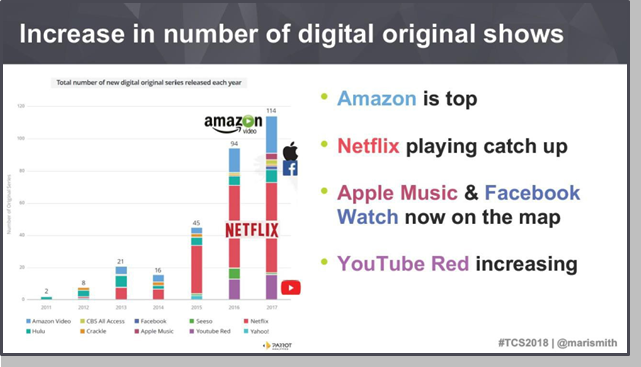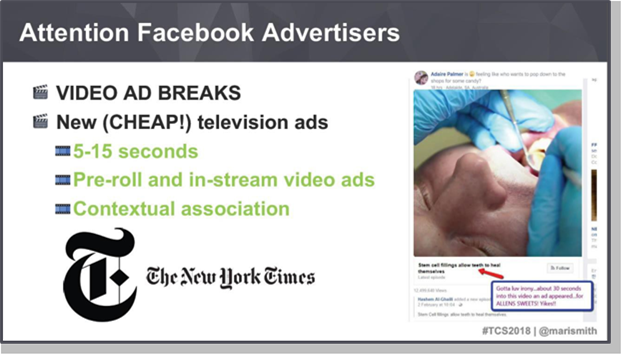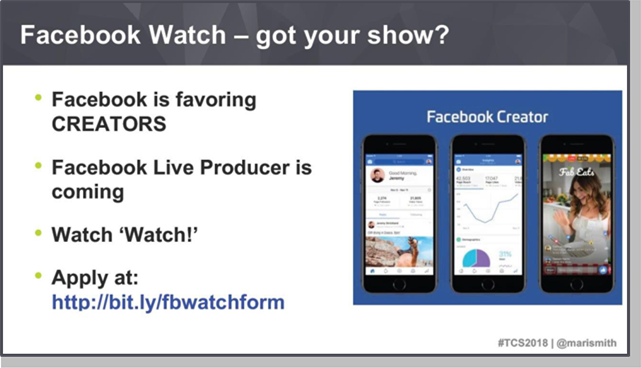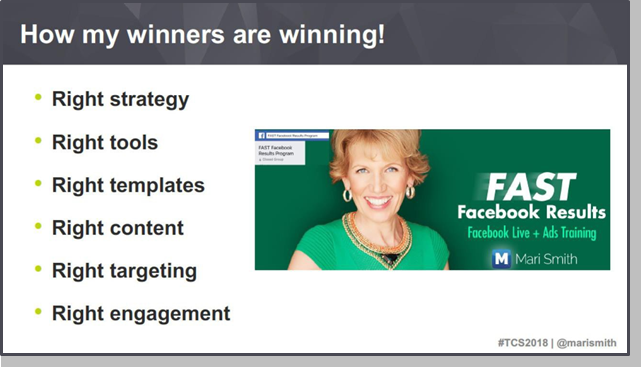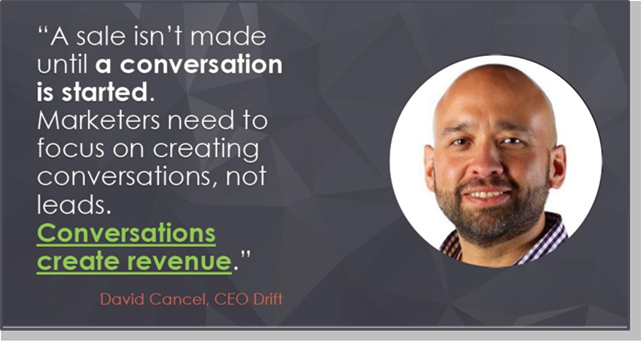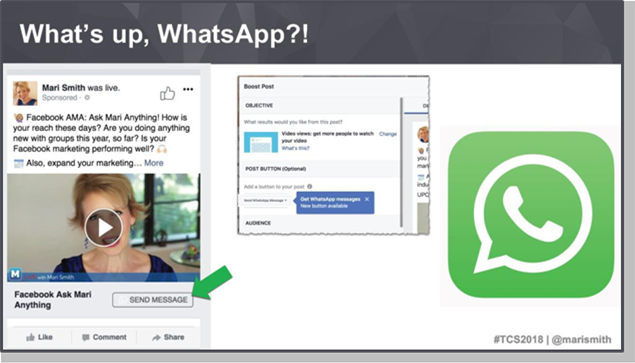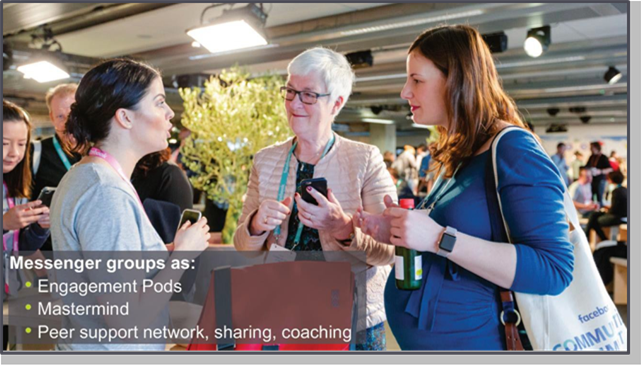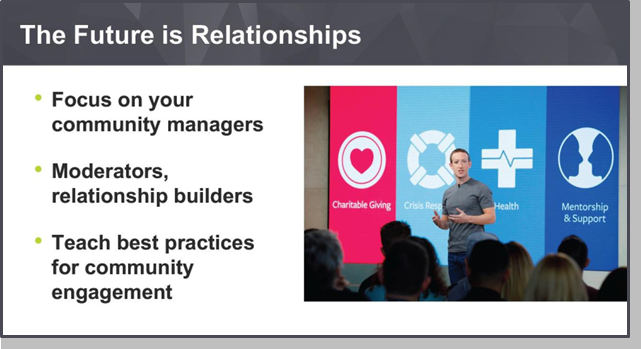Mari Smith
Often referred to as “the Queen of Facebook,” Mari Smith is considered one of the world’s foremost experts on Facebook marketing and social media. She is a Forbes’ Top Social Media Power Influencer, author of The New Relationship Marketing and coauthor of Facebook Marketing: An Hour A Day. Forbes recently described Mari as, “… the preeminent Facebook expert. Even Facebook asks for her help.”
Facebook is 14 years old now and the opportunity we have right now as marketers on Facebook is unprecedented. Here’s why: Depending on the source, there are about 70,000-100,000 businesses that have a page on Facebook, of which, only 6,000 are advertisers.
Now why is that? Why are more people not advertising on Facebook?
It’s because people have either tried and failed or they do not know what to do. It’s probably more of the latter because they need the help of marketers. They need training, they need agencies, and they need support to really do the full cycle of marketing. What’s happened is that a lot of people think if they just hit that boost button, all of a sudden the money is going to fall from the great “Zuck.” But it just doesn’t work that way.
They also don’t know what they’re doing. Many companies don’t even have the pixel installed. Or they’re not doing custom audiences or they’re just obsessed with the boost button.
Here’s one guy who’s doing it right…
Meet Andrew Cady, one of the top loan officers at Nations Lending. They have 40 branches all over the country and Andrew is known as the “Epic Mortgage Guy,” as it even states in his personal profile on Facebook. He’s the epitome of really putting the best practices in place: being yourself, being personal, being strategic.
For every single post, every tweet, every Instagram post, every Facebook post, there needs to be an underlying strategic intent. You can’t just put random things out there. You need to always be thinking, “How does this help my brand? How am I going to be perceived? How does this help me get more business, but without being sales-y and too business-y?” Right?
Andrew made a post that says “Can you get a down payment from Bitcoin?” Then there’s a great post where he’s just talking about his day: “Andrew’s feeling accomplished. One closing, four loans to underwriting, three loans, five new applications.”
There’s a post about what the government shutdown means for the mortgage and real estate industry. And then he’ll do some fun Facebook Lives here and there.
Do you see what he’s doing here? He’s educating his audience. He’s saying, I’m a real person, and he really has a lot at stake. And all of it helps him pick up business. The number one source of his business is referrals, so he’s always relationship building. Even though he has the support of a national major corporation, he is independent too.
Marketing Strategies on Facebook are Equally Applicable on Instagram
Instagram is Facebook’s next Facebook. All of the strategies that are used on Facebook are equally applicable to Instagram. It’s not by accident that you can also place ads on Instagram through Facebook’s ads manager – it’s one of the automatic placements.
Here’s a tip: Make sure you don’t always check the checkbox for automatic default placements. When you do that, you’re just doing the same ad everywhere. That’s lazy and ineffective because on Instagram there’s a different syntax, the links aren’t clickable, you need line spaces, you need more emojis, and you need more hashtags, whereas on Facebook hashtags don’t make any difference at all.
So, taking the time to craft your ads on Instagram slightly differently will make more of an impact. Of course, you have to do this anyway with video since you can only do 60 seconds on Instagram.
Let’s take a look at some stats and facts from Instagram…
As we mentioned, there are 70 million businesses on Facebook, of which only 6 million are advertisers. Then on Instagram, there are 25 million businesses and only 2 million are advertisers. But look at this stat: 60% of people are saying they discover new products on Instagram. Impulse buys from right inside the app are huge.
So like we said, Instagram is Facebook’s next Facebook and you definitely, definitely, definitely want a business Instagram account.
Instagram is really starting to favor business accounts. For example, there are numerous ways you can now schedule. You can schedule your posts and through the Instagram partners, such as Hoot Suite or Agorapulse.
Buffer and Post Planner are adding that function as well. You can also schedule on Instagram Stories by simply swiping up from a link. That is only available on business, and you need to have a certain number of followers first.
The Biggest Changes Taking Place on Facebook
Digital Streaming is the Future – Netflix, YouTube, Amazon, Hulu: look out! Facebook’s coming for your lunch. Facebook is absolutely determined to become a mainstream digital streaming destination platform. They launched Facebook Watch late last summer in the U.S. and it’s determined to be a serious competitor to YouTube and SVOD (subscription video on demand services). It’s basically next-generation television.
Conversational Commerce – Facebook is really working on Messenger Mobile and conversational commerce, which automates commerce through Messaging apps.
Groups – Facebook is putting a massive emphasis on Groups. Meaningful social interaction is the buzzword of today.
Instagram – As mentioned above, having a business account on Instagram provides marketers with a big leg up.
WhatsApp – WhatsApp is the number one messenger app outside of the United States, and it’s important to start putting it on your radar here in the U.S.
Voice-Activated Commerce is Coming Summer 2018
This summer, Facebook is bringing out a device called Portal. For a while, it was called Project Aloha, and its purpose is to compete with the Amazon Echo. It’s a video chat device that’s going to sit in your home for video chats, of course, but also for voice-activated commerce.
There is a lot of pushback out there in the masses since “Facebook” and “privacy” and “trust” in the same sentence are always a little challenging. Imagine having a device that does facial recognition and is fully connected to everything Facebook – talk about big brother! It’s priced at $499, a little more than the Amazon Echo Show (the one with the video device on it).
Facebook Digital Streaming Television
Above is a screenshot of what the Facebook Digital Streaming Television looks like on mobile. It’s constantly changing, but right now, you’ll see what your friends are watching, what’s making people laugh, you name it, it’s all in there.
You can watch it one of three ways: mobile, desktop, and television (yes, they have a television app).
The television advertising industry is at about 70 billion dollars, and is expected to go up to 75 billion in the next couple years. Internationally, it’s expected to increase to 210 from 170. What is going to happen, though, is that more corporations are going to split their advertising dollars and put some to television and some to digital streaming because there’s no other platform on the planet that can offer what Facebook offers.
And what Facebook offers are the social graft, the friendships, and the connections. What they’re really wanting to do, more than anything, is get those peer-to-peer relationships so that we’re all watching the same event at the same time and talking to each other. That’s what they call meaningful social interactions.
There was a study not too long ago that identified 5 factors that haveincreased online video viewing.
Another stat from a recent eye tracking study indicates that people gaze 5 times longer at video than static content on Facebook and Instagram.
It’s amazing how many times we see people talking about video or Facebook Live in our Facebook Newsfeeds, in ads or on organic posts, and it’s being illustrated with a static image. They haven’t taken the opportunity to make it a video. There’s no excuse for that.
You’ve got to do more video and you’ve got to look at ways to create quick and easy videos that make the point go further and get you those video views. When you do that, you can use custom audiences to engage people who have viewed your videos, and you can grab that movement that catches the eye. You want to have that.
Netflix, Amazon, and Hulu are the three biggest SVODs (subscription video on demand), and they have increased their investment and original content from 5.5 billion to 13 billion in the last four years. Netflix has come out and said that they are going to be spending up to $8 billion in 2018 with the aim at making half its catalog original series. If they’re original series, that means you can only get them on Netflix, right? That’s what’s happening with Amazon and Hulu and also Facebook.
There is also an increase in exclusive streaming rights, which means that is the only place you can watch it. Facebook actually won the Golden Globes red carpet. It was a two-hour pre-party that Twitter got last year and Facebook got this year.
Fast forward a few years from now and imagine that one of these big platforms gets the exclusive rights to stream the Superbowl, which gets 100 million viewers. That’s a lot of advertising that you can sell or monetize with.
So here’s why video is so important. Attention, Facebook marketers! Video ad breaks are the new cheap, cheap, cheap. But you’ve got to consider a couple things to do it right:
Keep it Short
The juice company, Tropicana, tested five-second, six-second, and fifteen- second videos, and they found that six seconds performed better than fifteen seconds. Get your point across super-fast, lightning fast.
You know how it is. When you’re on YouTube watching a video and an ad comes up, you’re counting 5-4-3-2-1-skip! It’s irritating, but if the ad is targeted well, all the studies show that people would rather see an ad that’s super relevant and well targeted.
One of the biggest challenges that marketers and advertisers have on Facebook is not getting the right target market and then missing the mark with the type of ad, especially in stream video because it’s interruptive.
Consider Contextual Association
Contextual association can land you really good advertising or really bad advertising. Here are two examples: Good – One of my clients put an ad out there and she says to me, “Mari!
Oh my gosh, I just saw that we’re advertising in the New York Times, now.” This happened by checking the button for audience network, which works by contextual association.
Bad – Look at the screenshot above of the dental video. That was a video ad on Hashem Al-Ghaili, which has 12.5 million views. About 30 seconds into the video, an ad appeared for Allens Sweets. If it was meant to give the dentists more business, I guess it worked!
These Days, You Need to Have Your Own Show
You want to think about having your own show on the Facebook Watch platform. Start by being a Creator.
The Creator App
Facebook recently released the Creator App, which is kind of a rebrand of the Mentions App. It gives you the ability to make an intro video and an outro video to put on your Facebook Lives. That can be a powerful thing.
To get the app, go to your Facebook page and into your settings. Then click Edit Page, and it’ll show you a template of the tabs that you have. There are many different templates for your tabs and there is a fairly new template called “Video Creator.” If you change it to Video Creator, you should have access to the Creator App and you can download it in the App Store. In addition, you get a nice new tab that features your live videos and is a whole different layout.
Facebook is favoring creators. They’re going to have a full-on professional production quality studio, and the ability to do switching out b-rolls and multiple cameras. It’s not known yet if they’re going to have it available to the masses, but certainly they’re working with some bigger brands out there.
Watch the Watch platform to get a feel for what they’re doing.
The main thing Facebook is looking for from show creators is episodic content. Choose a day and a time – Tuesdays at 10, Thursdays at 2 – whatever it might be, once a week or every other week. They could be pre-recorded, but schedule and drop your video content at the same day and time each week. That’s how you show Facebook you are a creator, you have a show, and then by filling out that Watch application form, you could get featured on the Watch platform before long.
Monetizing Your Show
It’s going be a little while before you can really see some serious revenue coming from the ad rev share component of Facebook. But there are numerous other ways you can monetize shows. For example, I highly recommend that you look for show sponsors, brand ambassador relations, affiliate relations, and product placement.
Then obviously you’re going to do your own ad campaigns to elevate the reach, which will help you to have a bigger platform to monetize even better, especially when the ad revenue really kicks in from Facebook.
How to Create Videos Right
Buffer did a study and they say that 43% of marketers said they’d create more video content if there were no obstacles like time, resources, and budget.
Wave.video is one of my favorite, favorite tools. I have more people winning with the wave video tool than any other. They have millions of royalty-free assets. It’s so easy to think of a concept and go in there and map it out, and now they just added a bunch of different video formats as well.
Boosting Video Reach Through Facebook Ads
On the topic of amplifying the reach of your videos, Cheryl Sandberg, CEO of Facebook, said on one of the earnings calls last year: “All ads must drive business. It’s about results, not about metrics.” She used the term “proxy metrics,” meaning video views, even lift, ad recall, clicks, reactions, and shares. What Facebook wants is for your ads to turn into leads and sales.
And she literally said, “You see an ad, you go buy a Starbucks. You see an ad, you go buy a truck.” She literally said that, but Starbucks is more of an impulse buy. A truck is a journey – it’s a customer journey. You want to use your content and your video to take people on that journey so that they will know, like and trust you. It’s about top of mind awareness and building that relationship, that word of mouth so that when your target market is in the market for a truck, they’ll come to you to buy the truck, not others.
Messenger Ads
Messenger is going to be one of the major platforms for marketing, but unfortunately marketers might ruin Messenger.
Think about it – you can put ads on the home screen now. But so far, the ads inside Messenger are pretty lame. They’re just kind of average. Ads in the Newsfeed are somewhat contextual. People may or may not notice a little sponsored label.
Your job is to make the ad in the Newsfeed feel as relevant and timely as the content that people’s friends are sharing with them. This is straight from Zuck a few years ago – they want the ads to feel like regular posts. But so far in Messenger, they’re so interruptive and so out of context.
Try something more like this: “Psst! Hello, I know I’m in your inbox right now, but can we just have a little chat?” Just something to build that bridge to let people know that you realize you’re in their inbox and that’s an intimate place. Then you’re kind of one-on-one. It’s conversational commerce. If you can make people feel good, it’s a major, major competitive advantage.
Speaking of which, I’ve been known for this saying for literally a decade. “Content is king. Engagement is queen and she rules the house.” And that’s actually the title of my next book. Finally, after ten years, Zuckerberg has caught on to this, because on January 11, 2018, they announced this big change saying that Facebook wants meaningful social interaction. That means comments. That means in-depth back and forth between people who have relationships.
They’re on a mission to have people feel better about using Facebook.
Include WhatsApp in Your Marketing
I highly encourage you bring WhatsApp into your marketing mix throughout this year and beyond because Facebook has plans to make this big.
Here’s a simple example of how to use it. The following screenshot is off of the boost button, and you can see that it says “Send WhatsApp Message.” To the left of that is a mockup of where it says “Send Message.” Obviously, you will target your market outside of the U.S. and they’re going to see that they can message you on WhatsApp. How cool is that? It really is a great new feature.
Get Engaged in Messenger Groups
Messenger has great capabilities to create groups. I’m not talking about Facebook group features, but about having a group of people that you chat with, like a chat group. And they are terrific for doing what’s called an engagement pod. You could publish a blog post, and you message your peers inside your engagement pod, saying “Hey, can you make a comment?” Or “Can you share this?”
It can also be used as a mastermind or a peer support network to share and coach with one another. In the digital age, people are siloed. They’re working out of their garage or spare bedroom, and the more community we can create through these Messenger groups, the more people want to belong.
You know it’s so funny, they always say that technology moves at a rapid, rapid, crazy, warp speed, but human beings, fundamentally, we haven’t changed all that much. We want to know that we matter, that we belong, that we’re important, that people care about us.
My motto for years is “relationships first, business second.” Seth Godin wrote a book called Tribes many years ago and there’s a line in that book that says that people can smell the agenda of a leader. Well I think people can smell the agenda of an advertiser or a marketer. You can’t BS genuine care. You can’t just pretend that you really care about people, while what you actually care about is their credit card. Obviously you’ve got to be in business to do business and make money, but we have to have this genuine passionate care, empathy, compassion, and understanding.
My friends the future is definitely relationships. Facebook is on a mission to help us use groups more and focus on community managers, and they are bringing out many new features for groups. You, as a marketer, a business owner, an agency, need to be focused on community managers, moderators, and teaching best practices for community engagement.
Make sure you have people on the front lines who are very skilled at relationship building and have the right soft skills. I have this saying that when emotions go up, intelligence goes down. So when people get all worked up, you don’t want to have someone responding to them that is equally worked up. You have to have people who have emotional intelligence.
- The New Relationship Marketing
by Mari Smith

